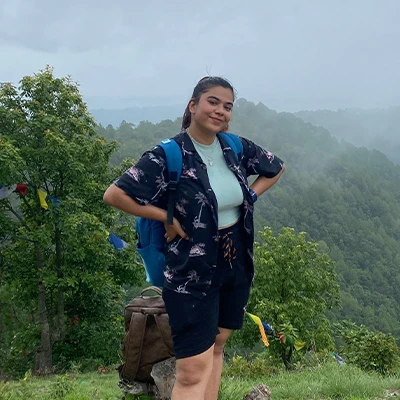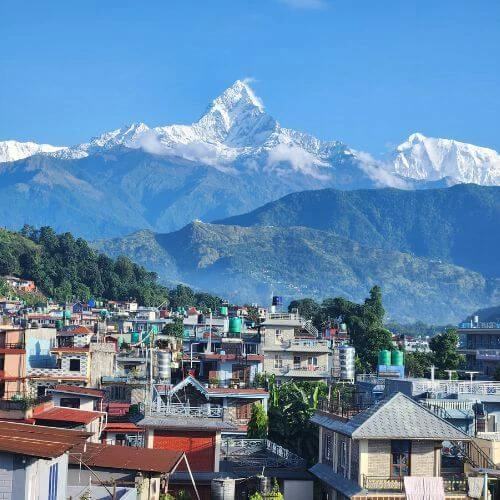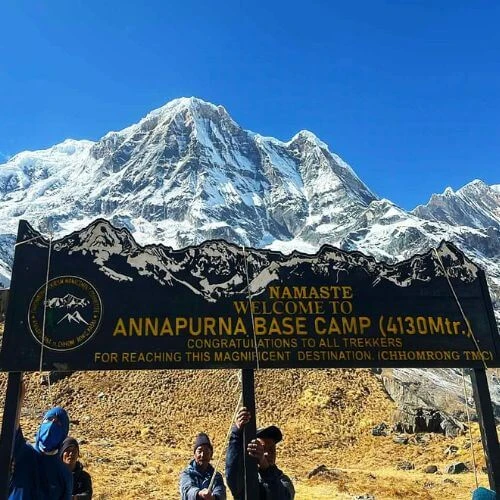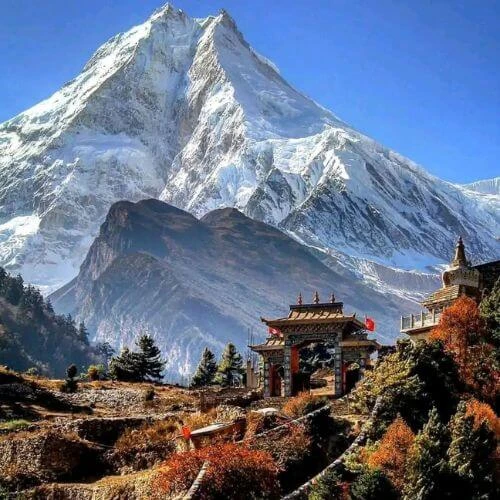Planning the Mardi Himal Trek? Don’t go in blind. Whether you're wondering what to pack, when to go, or how to avoid altitude sickness, these 10 expert tips for Mardi Himal Trek will help you prepare the smart way. Avoid rookie mistakes, make the most of the views, and stay safe every step of the way.
10 Expert Tips for Mardi Himal Trek – Avoid Mistakes & Maximize Views
Table of Contents
- 9
Mardi Himal Trek - 7 Days
- 2 hours6
Mardi Himal Helicopter Tour from Pokhara
Price fromUS$350
Planning the Mardi Himal Trek? Don’t go in blind. Whether you're wondering what to pack, when to go, or how to avoid altitude sickness, these 10 expert tips for Mardi Himal Trek will help you prepare the smart way. Avoid rookie mistakes, make the most of the views, and stay safe every step of the way.
The Mardi Himal Trek offers an incredible experience with breathtaking mountain views, rich culture, and alpine meadows. The trek route lies in the Annapurna region, which showcases Nepal's natural beauty and dense forest in a short and fun journey. I think for a smooth journey, everybody should go over the tips for Mardi Himal Trek at least once.
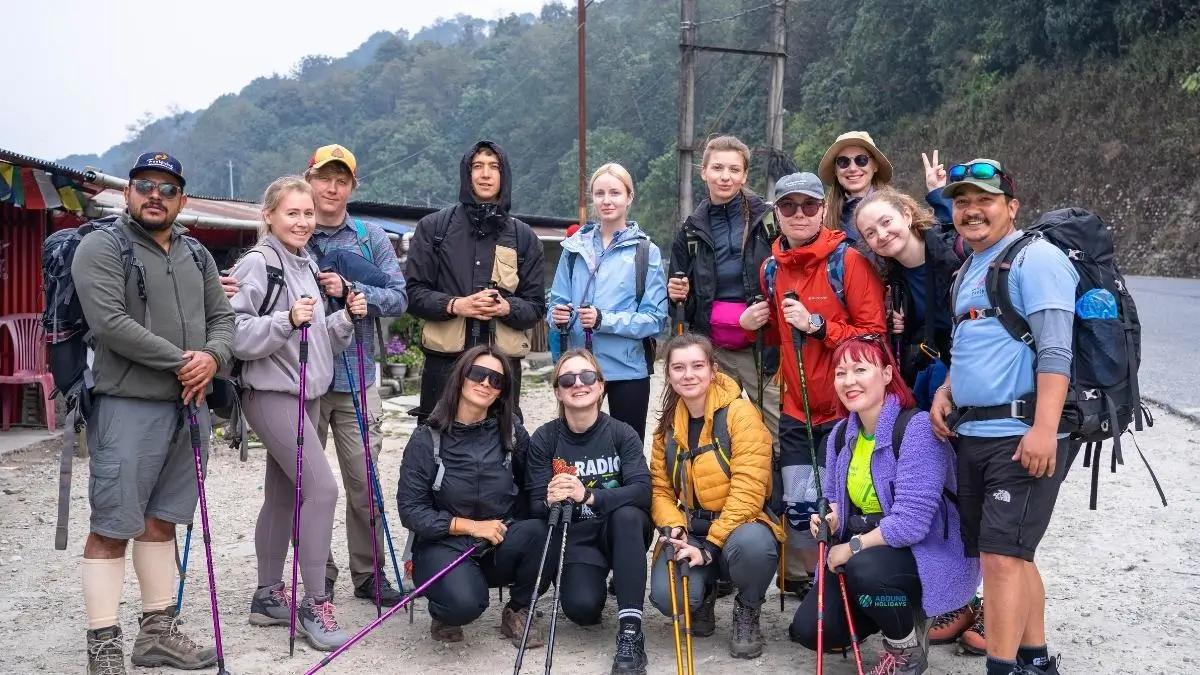
While the trek is on a easy to moderate level compared to some other Annapurna treks, you still need to be prepared enough for safety and enjoyment. Proper planning and knowledge can take you a long way on your trek.
We at Abound Holidays have put together a list of tips for Mardi Himal Trek that will be essential for your journey, such as which season would be best, transportation and accommodation, benefits of booking early, and many others.
Let's dive right into it.
1. Finalize the Best Season to Trek Mardi Himal
The best seasons to trek the Mardi Himal would be spring and autumn, with their clear sky view and moderate climate. Choosing the right season to trek is very important, as it is detrimental to your experience on the route. That's why these two months are popular for almost any kind of trek, as they offer the blooming time, crystal clear skies, and mountain vistas.
But you should avoid trekking during the monsoon season as there is heavy rain ful and the trails get slippery. Same with winter as the season gets colder and snowy compared to other seasons.
Best months: March to May (spring) and September to November (autumn)
Experience clear skies, moderate temperatures, and stunning landscapes
Avoid the monsoon (June–August) due to heavy rainfall and trail hazards
Winter (December–February) can be very cold and snowy
Recommendation Read:
Pokhara: The Tourism Capital of Nepal
2. Best Viewpoints that You Can’t Miss on the Mardi Himal Trek
The Mardi Himal Trek offers a lot of beautiful viewpoints, including panoramic views of the Annapurna range. The low and high camps are best for capturing the sunrise, which paints the mountain peaks golden, making a mystifying scene.
It would be good if you could schedule your trek to reach these places early in the morning or late in the evening to see a nice view of the sunrise or sunset, ensuring the best experience for photography.
- Sunrise views at Low Camp and High Camp are breathtaking
- The Summit viewpoint offers panoramic Himalayan vistas
- Best photo times: early morning or late afternoon
- Pace your trek to enjoy quieter, scenic moments
3. Plan a Proper Mardi Himal Trek Itinerary
An itinerary is something every trek needs so that you can track your progress and make sure you reach each of your destination on time so that you wont have to worry about time management. A well planned itinerary will balance your trekking days with acclimatization. Most trekkers complete the trek in about 6 to 7 days including rest days to adjust to the sudden altitude changes.
- Typical trek duration: 6 to 7 days
- Include 1–2 acclimatization days for altitude adjustment
- Common trailheads: Kande or Phedi from Pokhara
- Add buffer days for rest or delays
4. Arrange Transportation To and From Trailheads
Transportation is very important to have a smooth start and begin your journey on a positive note. You will take tourist buses from Kathmandu to Pokhara, which are common and budget-friendly, and a local jeep will take you to the starting point of the trek - Kande.
- Tourist buses from Pokhara to the trailheads (Kande/Phedi)
- Private jeep transfers for comfort and convenience
- Book transportation ahead of time during busy trekking seasons
- Confirm schedules, as they may vary due to unforeseen circumstances
5. Book Accommodation Early
Everybody wants to trek during the best season, and as you've guessed it, the teahouses and lodges during this time are filled to the brim. That’s why it’s important to reserve your accommodation ahead of time to make sure you get a comfortable place to rest each night, especially in popular rest places like the Low Camp and High Camp.
- Book lodging early during the spring and autumn seasons
- Reserve rooms at key stops: Low Camp and High Camp
- Consider using trekking agencies like Abound Holidays for advance bookings
- Flexibility helps, but early reservations are safer
Also Learn on, Top 10 Things To Do In Nepal Other Than Trekking.
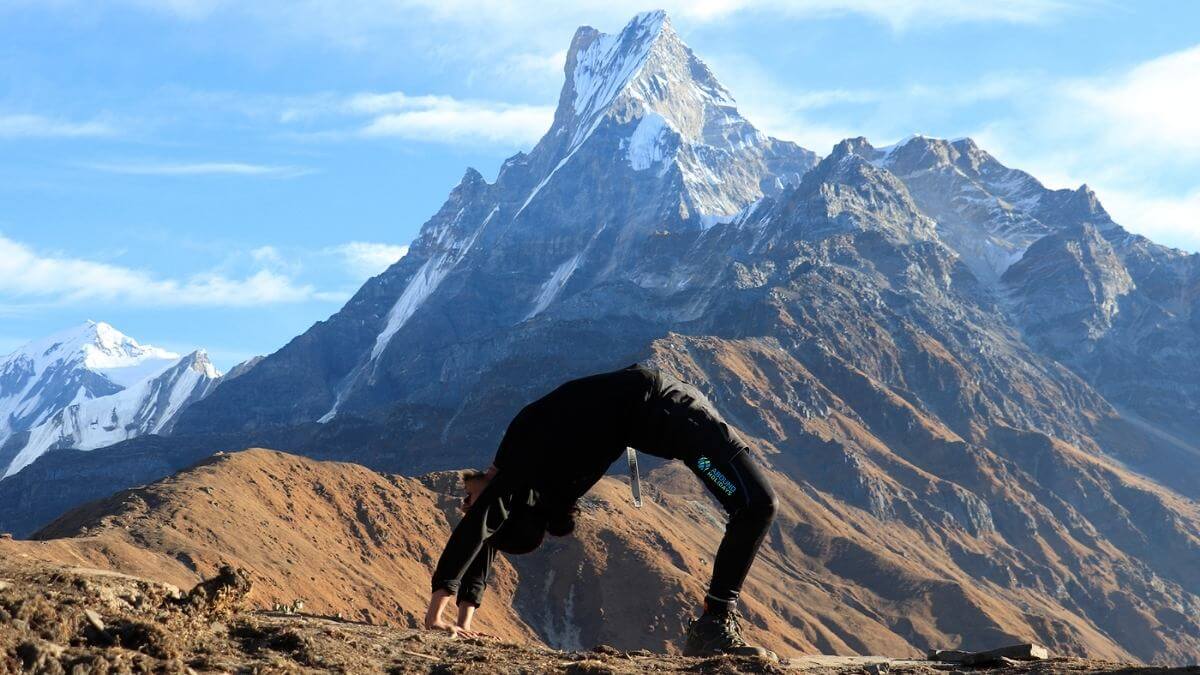
6. Gather Your Permits and Guides that Are Required for Mardi Himal Trek
Permits have become mandatory for trekking in the Annapurna region. You will require permits like the Annapurna Conservation Area Permit (ACAP) and a TIMS (Trekker's Information Management System) card. You can obtain these permits in either Kathmandu or Pokhara.
With permits, hiring a licensed guide has also become compulsory on the Mardi Himal Trek, all for the purpose of ensuring your safety and making sure you have the best experience with local knowledge. We at Abound Holidays will arrange all permits and guides necessary so you don't have to worry about it.
- Make sure you obtain ACAP and TIMS permits before trekking
- Permits are available for purchase in Pokhara or Kathmandu
- A licensed guide is required for the Mardi Himal Trek
- You can book guides and permits through agencies like Abound Holidays
7. Packing Tips for Mardi Himal Trek
Smart and light packing is crucial for a comfortable trek these days. Things like layering your clothes allow you to adjust to the changing temperatures. It's best that you include moisture-absorbing base layers, warm mid layers, and waterproof outerwear for maximum comfort.
Also, don't forget to get yourself some sturdy hiking boots which are comfortable for a long journey trek, a trekking pole for stability and support, a quality sleeping bag which is certified for all seasons, and enough cash since there are no ATM available on the route.
- Pack light and use moisture-absorbing, layered clothing
- Include a waterproof jacket and pants
- Essential gear: hiking boots, trekking poles, sleeping bag
- Carry enough cash for teahouses and emergencies
8. How Much Does the Mardi Himal Trek Cost?
The cost of the Mardi Himal Trek, except for the package, depends on your choices. Mainly accommodation, food, and other services. If you are tight on budget then you can opt for basic teahouses and simple meals, while some prefer private rooms and more variety on the food.
Additional expenses like permits, guide and porter fees, transportation, and any gear rentals also piles up the expenses as you trek.
- Daily costs vary by accommodation and food preferences
- Budget options: basic teahouses and local meals
- Comfort options: private rooms and diverse menus
- Additional costs: permits, guides, transport, gear rental
Item | Budget Option | Comfortable Option |
Teahouses | $5–$10/night | $15–$25/night |
Meals (daily) | $10–$15 | $20–$30 |
Permits (ACAP + TIMS) | ~$40 | Same |
Guide/Porter (daily) | $25–$35 | $35–$50 |
Transport (round trip) | $30–$50 | $80–$100 |
That's why we at Abound Holidays offer the Mardi Himal Trek Package so that you won't have to worry about most of these things.
Contact Abound Holidays for the best Mardi Himal trek packages and expert advice.
9. Protect Your Knees During the Steep Descents
On your way back from the route, you will face a steep downhill, which can strain your knees. One must be careful in order to prevent injury. A long trek can achieve much by minimizing impact and balance on the trek through a trekking pole.
Always take shorter, steadier steps instead of long strides to decrease the stress on your knees. If you have knee issues, consider wearing supports or braces, and don’t ignore the signs your body gives to avoid unfortunate injury.
- Use trekking poles for stability and knee protection
- Take short, controlled steps on descents
- Wear knee supports if prone to pain or injury
- Rest when needed to avoid overexertion
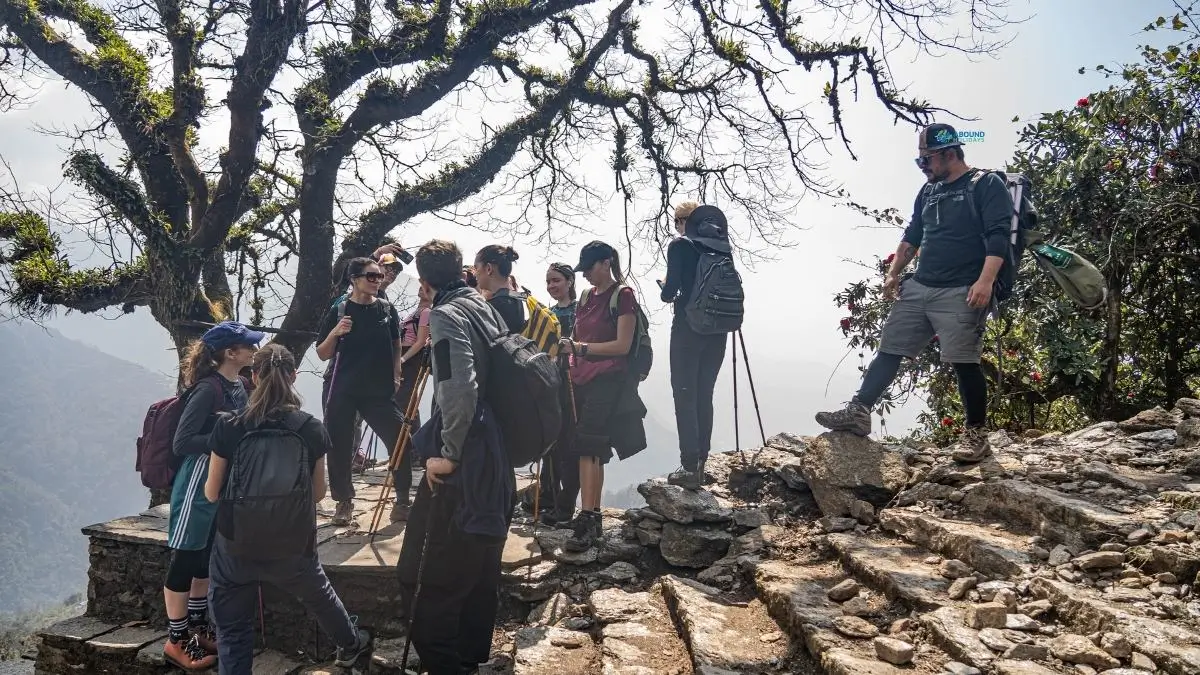
10. Unpredictable Weather: Follow This
Mountain weather is some of the most rapidly changing weather out there, so being prepared for any given circumstances is critical. That's why always have layered clothing so that you can adapt to the varying temperatures and always carry a waterproof jacket and extra socks.
Checking daily weather forecasts can also give you a heads-up on how the weather will turn out to be for the day, so make sure you adjust your plans as needed. If necessary, wait out and take extra rest days or choose alternate routes.
- Dress in layers: base, insulation, waterproof
- Carry a rain jacket and spare socks
- Check weather updates every morning
- Have backup plans for bad weather
Need More Tips? Contact Abound Holidays
Abound Holidays is a trusted trekking agency with years of experience in organizing Mardi Himal Treks. We provide expert licensed guides with local knowledge, help you with your packing list, and cover your permits and booking to make your trek a safe and hassle-free journey.
Plan your Mardi Himal Trek with our expert team for a hassle-free adventure. Contact Abound Holidays now!
Explore more Annapurna Region Trek Packgaes:
- Mardi Himal Trek - 7 Days
- Ghorepani Poonhill Trek- 7 Days
- Short ABC Trek- 8 Days
- Annapurna Circuit Trek - 10 Days
Frequently Asked Questions (FAQs)
What is the best time for Mardi Himal Trek?
The best time to do the Mardi Himal Trek is either spring (March to May) or autumn (September to November). These seasons bring stable weather, clear skies, and excellent views of the Annapurna range. Spring also has blooming rhododendrons, while autumn skies are crisp and views are the sharpest. Avoid the monsoon (June to August) because of heavy rain and slippery trails.
Is a guide mandatory for Mardi Himal Trek?
Yes. Since 2023, Nepal mandates licensed guides for most treks, including Mardi Himal. This improves safety and enriches your cultural experience. Google prefers in-depth, fact-based answers like this to appear in featured snippets.
How difficult is the Mardi Himal Trek?
It’s considered moderate. No technical climbing, but daily ascents and altitude (up to 4,500m) require good fitness. Search algorithms prioritize content that clearly sets expectations.
What should I pack for Mardi Himal Trek?
Essentials include layered clothing, waterproof gear, hiking boots, sleeping bag, trekking poles, and enough cash. Structured lists like this often get pulled for snippets.
Do I need to book teahouses in advance?
During spring and autumn, yes. Limited rooms fill fast. Booking ahead is smart, especially at High Camp and Low Camp. Google favors direct answers tied to user pain points.
How cold does it get on the Mardi Himal Trek?
At High Camp and Base Camp, temperatures can drop below freezing even in peak seasons. Nights often go down to -5°C to -10°C. Bring thermal layers and a four-season sleeping bag.
Can beginners do the Mardi Himal Trek?
Yes, many beginners complete the Mardi Himal Trek successfully. It’s shorter and less crowded than other Annapurna routes. That said, doing some cardio and hiking practice beforehand really helps.
Are there ATMs or mobile signals on the trail?
No ATMs after leaving Pokhara. Bring enough Nepali rupees for your entire trek. As for signal, some teahouses have patchy Wi-Fi, but don't count on stable mobile service.
How much cash should I carry for the trek?
A good ballpark is $25 to $40 per day depending on how basic or comfortable you want your stay. Multiply that by your trek days and add a buffer.
Is altitude sickness a risk on Mardi Himal?
Yes, especially above 3,000m. Symptoms include headache, nausea, and fatigue. To reduce your risk, ascend gradually, drink lots of water, and don’t skip acclimatization days. If symptoms worsen, descend immediately.
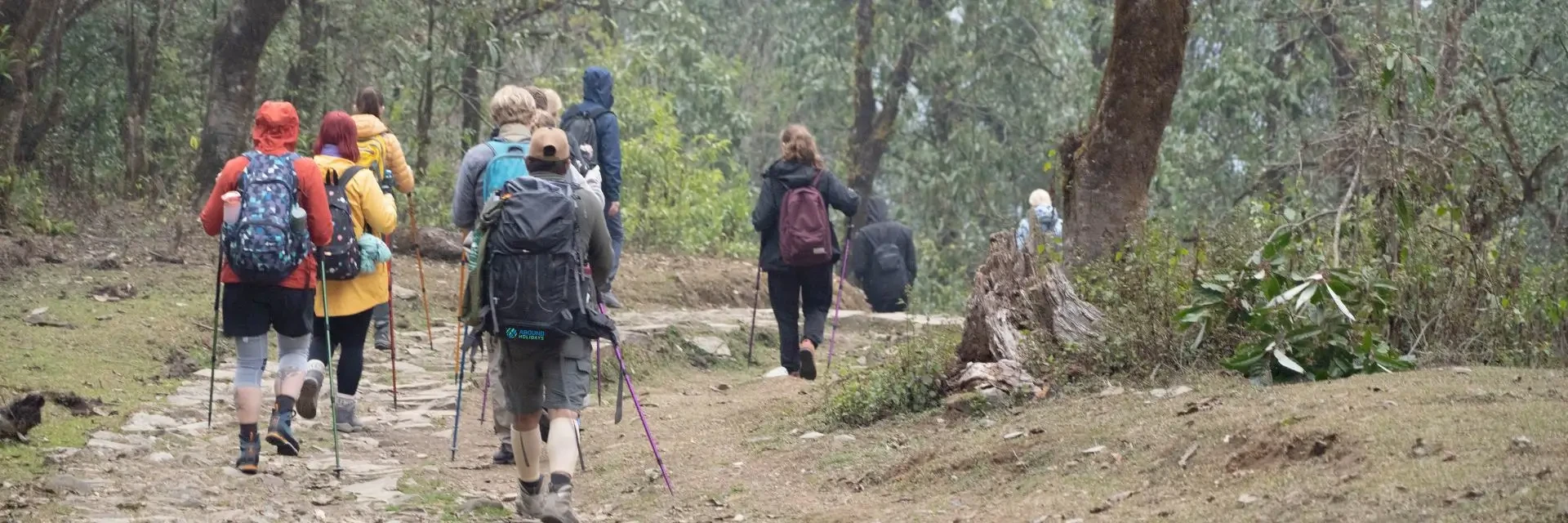
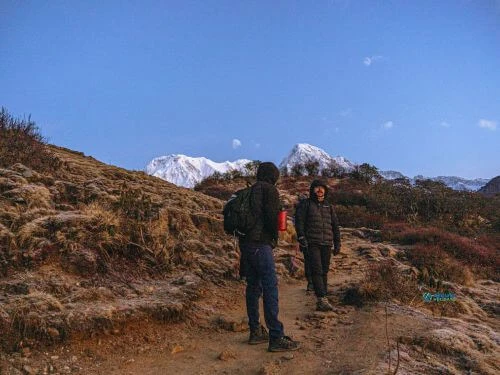
 based on 5 reviews
based on 5 reviews
